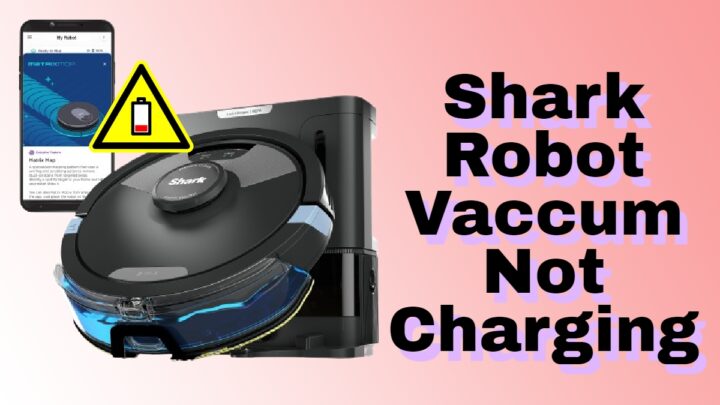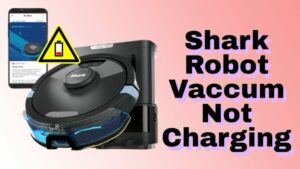If you’ve ever found your trusty Shark robot vacuum not charging, you’re not alone in the frustration it can cause. But fear not! In this comprehensive guide, we’ll unravel why your Shark robot vacuum might be playing hard to get when it comes to juicing up. Whether you’re dealing with a blinking charging light, a vacuum that won’t even recognize its charger, or any other charging-related issue, we’ve got you covered.
First, we’ll delve into the typical culprits behind these charging woes, from dirty connectors to faulty adapters. Then, we’ll provide you with step-by-step instructions on troubleshooting and resolving these issues, ensuring your Shark robot vacuum gets back to its efficient cleaning duties. From checking the power source to inspecting the charging dock and the robot’s connectors, we’ll leave no stone unturned in helping you revive your beloved cleaning companion. So, sit tight and get ready to reclaim your home’s cleanliness with our expert tips on fixing your Shark robot vacuum’s charging problems.
What will you see here?
What is a Shark robot vacuum?

The Shark Robot vacuum is a household game-changer, offering effortless cleaning with its sleek design, powerful suction, and intelligent navigation. This modern marvel swiftly conquers dust, dirt, and debris precisely, leaving your floors spotless. Equipped with cutting-edge technology, it effortlessly maneuvers around obstacles, ensuring a thorough clean in every nook and cranny. Its user-friendly app allows you to schedule cleanings, customize settings, and even control it remotely. Its ultra-quiet operation won’t disrupt your daily life, while its long-lasting battery keeps it going for extended cleaning sessions. Say goodbye to the days of tedious vacuuming; the Shark robot vacuum is here to simplify your life and elevate your home’s cleanliness to new heights.
How does the Shark robot vacuum work?
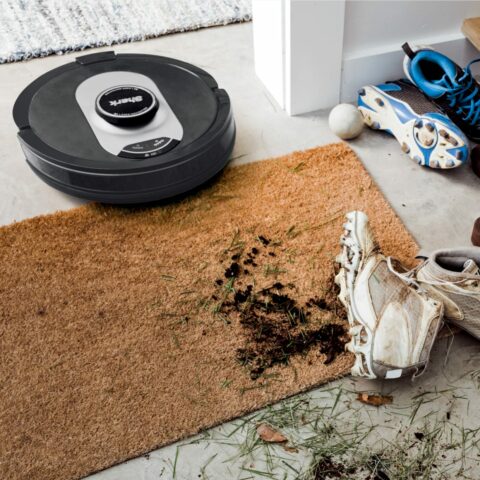
Shark robot vacuums are the embodiment of cutting-edge cleaning technology. These intelligent machines employ a sophisticated blend of sensors, AI, and mechanical components to transform your home’s floors into spotless surfaces autonomously. Equipped with infrared, bump, drop, and optical sensors, these robotic wonders can detect obstacles, avoid collisions, identify cliffs, and precisely map out your home.
The AI at the heart of these devices acts as the brains of the operation. It interprets the data from the sensors, creating a comprehensive map of your living space. This map represents the blueprint for the vacuum’s strategic cleaning route, ensuring it touches every corner and leaves none untouched. It’s a choreographer for cleanliness, orchestrating a dance of suction and brushes beneath the robot to lift dirt, dust, and debris from various floor types. What’s more, Shark robot vacuums offer a personalized cleaning experience. You can schedule specific rooms, customize cleaning modes, and even enjoy the convenience of self-emptying bases in select models.
With Shark robot vacuums notw+ charging, house cleaning transforms from a mundane chore into a futuristic, hassle-free endeavor. These marvels of technology blend sensor precision, AI intelligence, and robust cleaning capabilities to leave your floors immaculate, all with the touch of a button or a voice command. Welcome to the future of home cleaning, where intelligent robots do the heavy lifting.
Features of the Shark Robot Vacuum
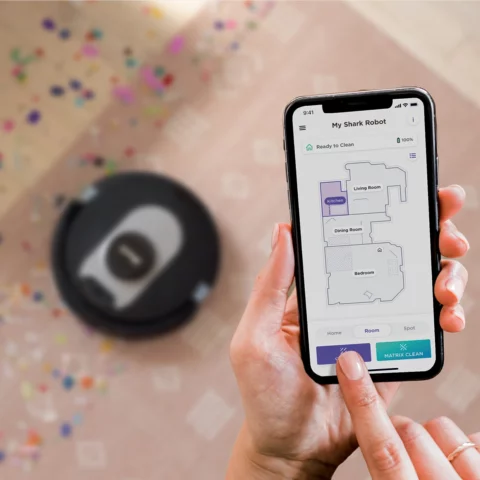
Shark robot vacuums are revolutionizing how we keep our homes clean, and they do it with many impressive features. Foremost among them is their powerful suction capability. Shark’s robot vacuums, regardless of the surface—carpet, hardwood, or tile—are known for their ability to effortlessly snatch up dirt, dust, pet hair, and debris. But it doesn’t stop there. Shark’s robot vacuums are also impressively smart. They employ advanced navigation technology that maps your home, ensuring efficient cleaning. The IQ Nav, for instance, utilizes laser guidance to create a precise map of your living space. Using PrecisionClean, you can even program these robots to clean specific areas, ensuring they clean every nook and cranny spotless.
Further, Imagine a vacuum that takes care of itself. Some Shark models feature a self-emptying base, eliminating the hassle of manually emptying the dustbin after each cleaning session. Your home stays cleaner with minimal effort on your part.
In today’s interconnected world, Shark robot vacuums offer Wi-Fi connectivity. Moreover, Control them using a smartphone app or voice commands. Start, stop, schedule cleanings, or check your robot’s status from anywhere. Further, For those with allergies, models equipped with HEPA filtration ensure allergens are trapped in the dustbin, keeping the air in your home clean and fresh.
Furthermore, These robot vacuums are versatile, designed to handle various surfaces, and their special brushes ensure even corners and edges get the attention they deserve. Additionally, Pet owners will appreciate the dedicated pet hair removal feature, making those stubborn furballs a thing of the past. Moreover, With options like the Shark IQ Robot Self-Empty XL, the Shark AI Ultra 2-in-1 Robot Vacuum and Mop, and the Shark ION Robot, there’s a Shark Robot vacuum to suit your specific needs.
Steps to Fix a Shark Robot Vacuum:
Proper Placement:
Position your robot vacuum correctly on the charging dock. Ensure the robot’s charging pins align with the dock’s charging contacts. Ensure that the vacuum is placed squarely on the dock.
Power Source Check:
Verify that the charging dock is connected to a functioning power outlet. Ensure that the power outlet is turned on and provides electricity. If necessary, plug another device into the outlet to confirm it’s working.
Charging Contacts Inspection:
Examine the charging contacts on both the robot vacuum and the charging dock. Look for any dirt, debris, or damage that might obstruct the connection. If you find any, carefully clean them with a soft, dry cloth. Be gentle to avoid damaging the contacts.
Charging cable inspection:
Check the charging cable for any signs of wear, fraying, or damage. Further, Pay special attention to the cable ends and connectors. If you notice any issues, replacing the cable is essential to ensure a secure connection.
Reset the robot vacuum.
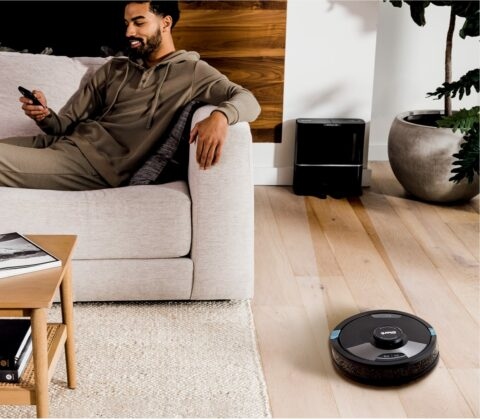
Restart the robot:Â This is the simplest and often the most effective step. Restarting a robot can help resolve minor issues or glitches, just like with computers and smartphones. To do this, you typically power off the robot, wait for a few seconds, and then power it back on. This action can reset the software and hardware components, potentially fixing any problems with charging or functionality.
Factory Reset:Â A factory reset can be more comprehensive if restarting doesn’t solve the issue. This process will erase all user data and return the robot to its original factory settings. Moreover, It can be a helpful step if there are persistent software glitches or the robot’s configuration has become corrupted. Be cautious when performing a factory reset, as you will lose any customized settings or data stored on the robot.
Inspect and clean the charging station.
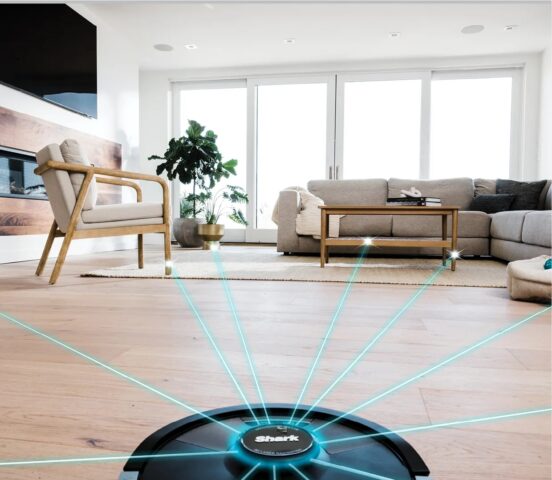
Cleaning the charging contacts and ensuring no obstructions are essential maintenance steps to keep your robot vacuum working efficiently. Here’s how you can do both:
Cleaning the charging contacts:
- Turn Off the Robot: Ensure that your robot vacuum is turned off or not charging during this process to avoid electrical hazards.
- Unplug the charging station: If your robot vacuum is connected to its charging station, unplug it from the power source to ensure safety.
- Prepare a dry cloth or microfiber towel. Use a clean, dry cloth or a microfiber towel to gently wipe the charging contacts. Make sure the cloth is completely dry to prevent moisture from entering the contacts, which could damage the robot vacuum.
- Wipe the Contacts: Carefully wipe the charging contacts on the robot vacuum and the charging station. You may need to open any charging cover or flap on the robot to access the contacts fully.
- Inspect for debris: While wiping, inspect the contacts for any visible dust, debris, or residue. If you notice stubborn dirt or residue, you can lightly dampen a corner of the cloth with water and repeat the cleaning process. Ensure the contacts are completely dry before reconnecting.
Clearing Obstructions:
- Remove the Robot from Obstructions: If your robot vacuum is stuck or unable to dock, manually lift it and move it away from any potential obstructions or obstacles.
- Check the charging station area: Inspect the area around the charging station. Ensure there are no objects, cords, or obstacles that might block the robot from docking properly.
- Clear Any Debris: Look for any loose debris or items on the floor that could be obstructing the robot’s path to the charging station. Remove any such items.
- Check Sensor Pathways: Many robot vacuums use sensors to navigate and dock. Ensure that the sensors on both the robot and the charging station are clean and unobstructed.
- Restart and Monitor: Once you’ve cleared any obstructions, place the robot vacuum back on its charging station and restart the docking process. Monitor it to ensure it docks successfully.
However, By regularly cleaning the charging contacts and ensuring there are no obstructions in the robot’s path to the charging station, you can help maintain the optimal performance of your robot vacuum. This will also prevent unnecessary wear and tear on the robot’s components and ensure it’s always ready to clean your floors effectively.
Assessing Battery Life:
Check the Current Battery Performance: Before considering a battery replacement, it’s essential to assess the current performance of your battery. Here are some steps to help you evaluate it:
Battery Health Software: Many devices have built-in software that can display your battery’s health. Check for this feature in your device’s settings.
Battery Usage: Monitor your device’s battery usage patterns. If it’s draining significantly faster than it used to, this could be a sign of a declining battery.
Battery Capacity: Use a battery health app or tool to determine your battery’s current capacity compared to its original capacity. A noticeable decrease may indicate a problem.
Charging Behavior: Observe how your battery charges. If it takes much longer to charge fully or doesn’t hold a charge for as long as it used to, this is a sign of battery degradation.
Overheating or Swelling: Physically inspect the battery for any signs of overheating or swelling. If you notice these symptoms, stop using the device immediately and seek professional help.
Replacing the battery (if necessary):
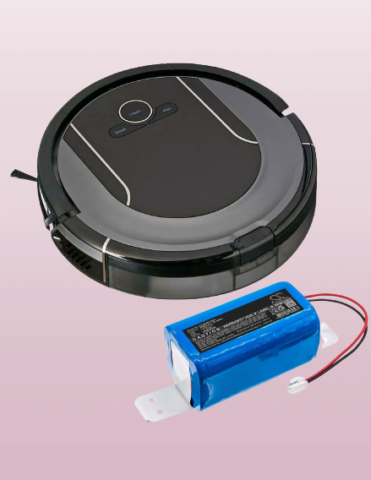
Determine Battery Compatibility: If your battery is indeed old or no longer holding a charge effectively, you may need to replace it. Ensure that you purchase a replacement battery that is compatible with your device. Refer to your device’s manual or manufacturer’s website for information on compatible battery models.
Backup Data: Before replacing the battery, back up all your important data and settings. This is a precaution in case something goes wrong during the replacement process.
Turn Off the Device: Power off your device completely before attempting to replace the battery. This is crucial for safety reasons and to prevent damage to the device or the new battery.
Tools and Safety: Gather the necessary tools for the replacement, which may include screwdrivers and prying tools. Ensure you’re working in a clean and static-free environment to avoid damaging any components.
Consult the user manual or online guides. Review the user manual for your device or search online for step-by-step replacement guides specific to your device model. These resources will provide detailed instructions on how to access the battery and replace it safely.
Professional Assistance: If you’re uncomfortable with DIY battery replacement or have a device with a sealed battery, consider seeking professional assistance from authorized service centers or technicians. They have all the necessary equipment to safely change the battery without causing damage to your precious asset.
Dispose of the Old Battery Properly: Many regions have recycling programs for batteries, as they can contain hazardous materials. Check with your local recycling facilities or electronics stores for battery disposal options.
Remember that battery replacement can vary greatly depending on the device, so always refer to the manufacturer’s guidelines and safety precautions for your specific model.
Update firmware and software
- Connect to the Robot: Make sure your robot vacuum is turned on and connected to your home Wi-Fi network. Many modern robot vacuums can be controlled and updated through a mobile app.
- Open the mobile app. Launch the mobile app associated with your robot vacuum. If you haven’t already, you may need to download and install.
- Log in or create an account: If required, login to your account associated with the robot vacuum. However, creating an account is mandatory, so you have to create one account to ensure that
- Check for updates.
- In the app, look for a “Settings” or “Device Info” section.
- There must be an option in the section to accurately check the update. This might be labeled “Firmware Updates” or “Software Updates.”
- Download Updates:
- Updates are necessary; they will all guide you to download and install them.
- Ensure your robot vacuum is connected to your Wi-Fi network during this process, as updates are typically downloaded from the manufacturer’s servers.
- Follow Instructions:
- Once the updates are downloaded, the app will likely provide step-by-step instructions on how to install them.
- Follow these instructions carefully. It may involve restarting the robot or waiting for the update to be applied.
- Wait for Completion: Allow the update process to complete. The process may be lengthy, and it may take some time.
- Verify the Update: After the update is installed, check the app or device settings to verify that the robot vacuum is running the latest firmware or software version.
- Test the Robot Vacuum: Test your robot vacuum to ensure that it’s functioning properly after the update. Check for any new features or improvements that the update may have introduced.
- Regularly Check for Updates: It’s a good practice to periodically check for updates, as manufacturers often release updates to improve performance.
Contact Customer Support
- Check Warranty: If your Shark vacuum is still under warranty, the first step is to contact Shark’s customer support. They can guide how to proceed, including potential repairs or replacements covered by the warranty.
- Troubleshooting: Before reaching out to customer support, it’s a good idea to try troubleshooting the issue on your own. Many common problems with vacuum cleaners can be resolved with some basic troubleshooting steps, such as checking for clogs, cleaning filters, or ensuring proper assembly.
- Contact Customer Support: If your troubleshooting efforts do not resolve the issue or if your vacuum is no longer under warranty, you can contact Shark’s customer support for more in-depth assistance. They can provide guidance, suggest additional troubleshooting steps, or recommend service options if necessary.
What are the common problems with a Shark robot vacuum?
Common problems with Shark robot vacuums not charging include navigation issues, such as getting stuck or failing to return to the dock; sensor malfunctions that hinder obstacle detection; and occasional brush or filter clogs. Battery and charging problems may also arise, affecting runtime and performance. Additionally, software glitches can lead to connectivity or scheduling problems. Regular maintenance and troubleshooting can often address these issues, but more complex problems may require professional servicing or replacement parts.
Is it necessary to do time-to-time service on your Shark robot vacuum?
Yes, regular maintenance is crucial for your Shark robot vacuum’s not charging optimal performance. Routine service includes emptying the dustbin, cleaning the filter, and inspecting the brush roll for debris. Moreover, These steps prevent clogs, maintain suction power, and extend the vacuum’s lifespan. Neglecting maintenance can lead to reduced efficiency and potential damage over time, so it’s essential to incorporate these tasks into your cleaning routine to ensure your Shark robot vacuum operates effectively.
Conclusion
Facing the issue of a Shark robot vacuum not charging can be frustrating, but with the right steps and a systematic approach, you can often resolve the problem of Shark robot vacuum not charging on your own. Start by checking the basics and working your way through the troubleshooting guide. Remember that regular maintenance and keeping your robot vacuum clean can also help prevent charging issues in the future. If all else fails, don’t hesitate to seek assistance from Shark’s customer support, especially if your vacuum is still under warranty.


